- Anfänger-Kurse
- Review, Workshops & Wiederholung
- Gruppen Stundenplan
- LineDance Schritte – Beschreibungen & Video
- Tanzbeschreibungen
- LineDance-Partys
- CountryBreakfast
- Traumtänzer Flughafen Tempelhof
- Traumtänzer Mariendorf
- Traumtänzer Kurfürstendamm
- Social Stream
- Traumtänzer Shop

Tour in Mexico
Linedance-tanzbeschreibung.
32 / 20 Count, 2 Wall, Intermediate Line Dance
Choreograph
Adriano Castagnoli

LineDance-Choreographie
Abfolge: A A B A A A A B A A A B A A A
Kick-Ball-Change, Kick 2x, Back Rock, Step Pivot ½ Turn L
1 + 2 RF nach vorn kicken, RF neben LF stellen, LF nach vorn stellen 3 – 4 RF 2x nach vorn kicken 5 – 6 RF nach hinten stellen, Gewicht zurück auf LF 7 – 8 RF nach vorn stellen, auf beiden Ballen eine ½ Drehung li. LF abstellen
Step, Lock, Step, Scuff, Step ¼ Turn R, Stomp up, Step ¼ Turn R, Scuff
1 – 2 RF nach vorn stellen, LF hinter RF kreuzen 3 – 4 RF nach vorn stellen, li. Ferse nach vorn über den Boden streifen 5 – 6 LF mit einer ¼ Drehung re. nach li. stellen, RF neben LF aufstampfen 7 – 8 RF mit einer ¼ Drehung re. nach vorn stellen, li. Ferse nach vorn über den Boden streifen
Side, Behind, Side, Cross, Step ¼ Turn R, Close, Heel, Together
1 – 2 LF nach li. stellen, RF hinter LF kreuzen 3 – 4 LF nach li. stellen, RF über LF kreuzen 5 – 6 LF mit einer ¼ Drehung re. nach hinten stellen, RF neben LF stellen 7 – 8 Li. Ferse nach vorn auftippen, LF neben RF stellen
Monterey ¼ Turn R with Hook, Grapevine with Stomp up
1 – 2 RF nach re. auftippen, ¼ Drehung re. auf LF, RF neben LF stellen 3 – 4 LF nach li. auftippen, LF vor re. Bein anwinkeln 5 – 6 LF nach li. stellen, RF hinter LF kreuzen 7 – 8 LF nach li. stellen, RF neben LF aufstampfen (Gewicht bleibt auf LF)
Tanz beginnt von vorne
Drag with ¼ Turn L, Toe Touch Behind 2x, Step ¼ Turn L, Lock, Step, Scuff
1 – 2 RF weit mit einer ¼ Drehung li. nach re. stellen, LF heranziehen 3 – 4 Li. Fußspitze 2x hinter RF auftippen 5 – 6 LF mit einer ¼ Drehung li. nach vorn stellen RF hinter LF kreuzen 7 – 8 LF nach vorn stellen, re. Ferse nach vorn über den Boden streifen
Step Pivot ½ Turn L, Step, Hold, Rock Step, Back, Hold
1 – 2 RF nach vorn stellen, auf beiden Ballen eine ½ Drehung li. LF abstellen 3 – 4 RF nach vorn stellen, einen Count halten 5 – 6 LF nach vorn stellen, Gewicht zurück auf RF 7 – 8 LF nach hinten stellen, einen Count halten
Back Rock, Stomp up 2x
1 – 2 RF nach hinten stellen, Gewicht zurück auf LF 3 – 4 RF 2x neben LF aufstampfen (Gewicht bleibt auf LF)
Inhaltsangabe, Übersetzung, Rechtschreibung ohne Gewähr!
PDF herunterladen: Tour in Mexico
- LineDance Berlin
- Linedance Gruppen und Termine
- Tanzkurs Details
- CountryBreakfast Playlist
- Mittwoch Hajoe
Dancing In Mexico: The Ultimate Learning Guide
February 04, 2015
Learn How To Dance In Mexico
We have all been there. We are on vacation in Mexico and we are off to have a fun night out with our friends. Have a couple of drinks, listen to some music, but then, when it comes to dancing, it just gets a little complicated. And here in Mexico, we have a lot of dance moves since we have many different music genres, from norteño to mariachi. But don’t let that intimidate you, we are about to show you some easy steps so you can get your groove on and learn the basics to dance while you are visiting Mexico.
Step 1: Take one straight tequila shot to encourage yourself to let go and forget the shame. we are all here to have fun and no one is going to judge your dance moves, at least not tonight, so…salud!
Step 2: It’s all about feeling the beat. So the first thing you have to do is just listen to music, relax your arms and let yourself go.
Step 3: Once you have started it’s time to move your feet from one side to another and clap every once in a while. That way you are going to show demonstrate that you are not only feeling the music, but you will also add a really cheerful move to your choreography.
Step 4: Now that you are pretty confident on the dancefloor it’s time to go even further, so it’s time to go for “la Macarena”, you know…one arm, the other, hand to your ear…that’s right, you already got this one covered. Plus, macarena is valid for any kind of music, just go with the rhythm.
Step 5: It is now time to get back to the basics and it doesn’t matter which beat you are dancing to, never forget to add a little hip movement, something that will make Queen B feel proud.
But the most important thing and something that you should never forget is to stay true to yourself and don’t be afraid to let yourself go, own the dancefloor!
So are you ready to dance the night out?
Discover the history of Xcaret through these three books: "Xueños," written by its creator; " Xcaret Passport," to have fun while you get to know its secrets as you explore the park, and a photographic gallery on Mexican culture.

Discover insider tips to unlock unbeatable promotions for your Xcaret adventure. Learn how to snag the best deals of the year with our expert advice.

We had a very interesting conversation with the art curator of Hotel Xcaret Arte about how creative expression can nurture the soul and promote personal growth.

Learn all about the annual Ibero-American Film Awards. If you're a movie fan, you've undoubtedly heard of the Premios Platino; if not, here's some context.

Three very safe ways to explore the Caribbean Sea: Ferry to Cozumel and Isla Mujeres, Snorkeling Tour, and Private Luxury Yacht ride.

Get to know the nighttime activities you can do at Xenses Insomnia in Playa del Carmen and tips to enjoy them to the fullest.

Receive exclusive information and promotions via email. :
Xcaret Xailing
Parks and Tours
Grupo Xcaret
Detinations
Xcaret - Mexico, Chetumal - Puerto Juarez Federal Highway, Km. 282, Rancho Xcaret,Playa del Carmen,Quintana Roo. México. CP 77710.
Telephone USA/CAN: 1-855-326-0682 Open Monday to Friday from 7:00 a.m. at 12:00 a.m. | Saturdays and Sundays from 7:00 a.m. at 10:00 p.m. Quintana Roo local time.
©Copyright 2022 Experiencias Xcaret Parques, S.A.P.I. de C.V
The Official Communication Site for Line Dance in New Mexico
The 2024 jamboree was a huge success what a great time we had dancing in the pines thank you to joann cruz and her team for all of their hard work and dedication , 2025 jam begins in.

Dancers! Get Ready for 2025 Im portant Letter and Registration Form
From host marlene siepel.

Instructors: Vote for your top 16 proposed dances for the 2025 Jam before
May 1, 2024 instructors workshop august 10, 2024.

Kenny Chesney Setlist: Sun Goes Down 2024 Tour
Share the post, share this link via, or copy link.
Kenny Chesney launched his massive 2024 Sun Goes Down Tour with a bang on Saturday (April 20), bringing along Zac Brown Band, Megan Moroney, and Uncle Kracker.
The setlist is packed with Chesney’s hits like “Beer in Mexico” and “American Kids,” plus covers of “Drift Away” and a heartfelt rendition of “Come Monday” as a tribute to the legendary Jimmy Buffett .
Check out the full setlist below for the songs you need to know before going!
1. Living In Fast Forward
2. beer in mexico, 3. keg in the closet, 4. here and now, 6. til it’s gone, 7. summertime, 8. save it for a rainy day, 9. big star, 10. no shoes no shirt no problem, 11. somewhere with you, 12. i go back, 13. get along, 14. never wanted nothing more, 15. take her home, 16. when the sun goes down ( with uncle kracker), 17. drift away ( with uncle kracker), 18. come monday ( jimmy buffett cover), 19. all the pretty girls, 21. the good stuff, 22. american kids, 23. setting the world on fire, 24. everything’s gonna be alright ( david lee murphy cover), 25. how forever feels, 26. don’t happen twice.

New Country Cash!

[ WATCH ] CMT Awards Toby Keith Tribute

Tim McGraw Setlist: Standing Room Only Tour

The Top 10 Richest Country Singers In The World

Top Country Mother-Son Dance Songs For Your Wedding Day

Kelsea Ballerini and Chase Stokes: Photos From CMT Awards

Scotty McCreery Is The Newest Opry Member [Watch]

Elvis Presley's Final Show: A Historic Night in Indianapolis, Indiana

Elvis Presley’s Final Show: A Historic Night in Indianapolis, Indiana

Enter To Win: Jamey Johnson


Choose The Music We Play On Hank FM!
Sign up for the country 97.1 hank fm newsletter.
We care about your data. See our privacy policy .
Country 97.1 HANK FM
Quick links.
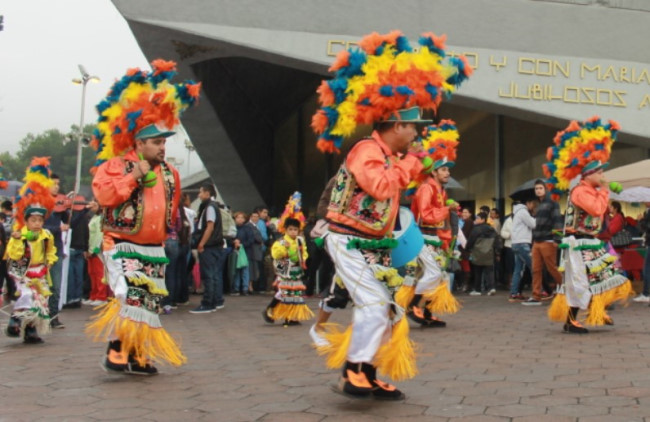
10 Most Popular Traditional Mexican Dance Styles
Mexico doesn’t just have beautiful landscapes and great people, it also has an incredibly vibrant culture.
Arguably, there’s nothing that shows off the country’s unique culture better than the many Mexican dance styles out there.
As a whole, they take inspiration from the country’s native dances, with small inspirations from African and European. You won’t see anything like it anywhere in the world!
Table of Contents
1. Chinelos – Popular Mexican dance style in Carnivals
2. concheros, 3. danza de los diablos, 4. danza del venado, 5. danza de los viejitos, 6. danza de los voladores, 7. jarabe tapatío – the most well-known mexican dance, 8. matachines, 9. moros y cristianos, 10. la conquista, final thought, top 10 most popular traditional mexican dance styles.
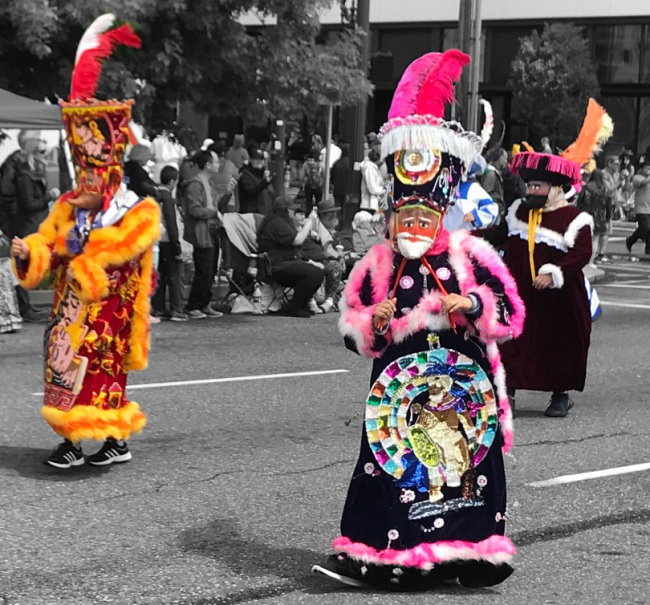
Chinelos is a costumed dance that’s extremely popular in the state of Morelos. So much so that it’s become a de jure symbol of the state.
Despite this reputation, Chinelos originated from the southern part of Mexico City.
It is a satirical comedy in dance form. The dance is all about making fun of the Spaniard colonists who tried (and failed) to suppress indigenous dance forms long ago.
Way back then, during Carnivals, people could wear masks and do things that aren’t normally accepted. That’s how Chinelos got the chance to flourish until today.
In Chinelos, dancers disguise themselves in costumes and masks. That’s how this dance got its name. The word ‘Chineros’ is said to have come from the Nahuatl word for ‘disguised’ (‘zineloquie’).
Typically, dancers imitate the way that Spaniards would elaborately dress. Notably, they also wear masks with fair skin and beards.
Today, the dance style still has a huge appeal. In Mexico City, Chinelos dance groups are the most popular during Carnivals.
You can also see troupes dancing even outside of Carnivals. If you want to, you can even hire dancers for special occasions!
And don’t worry, although Chinelos was originally made up to make fun of Europeans, these days most people just take it as good fun.
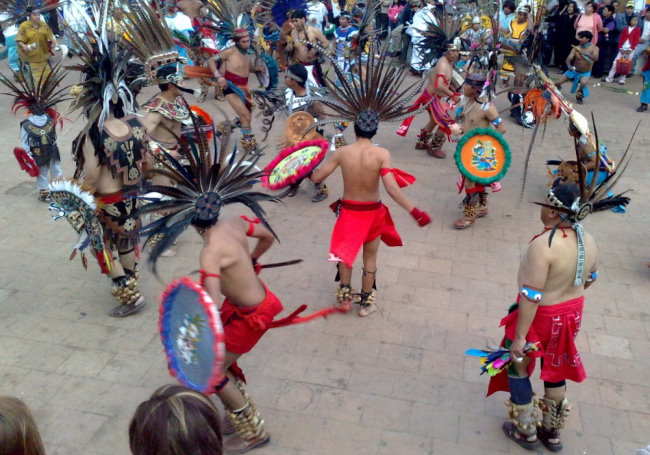
If you’re looking for an indigenous dance to feast your eyes (and ears) on, look no further than Concheros.
Unlike other dance styles that you may see performed in Mexico, Concheros is mostly an indigenous dance with only minor influences from the Europeans.
Besides Concheros, the dance has many other names. The most prevalent are Huehuenches, Chichimecas, Aztecas, and Mexicanas.
Concheros came to be after the defeat of the Aztec Empire by the Spanish Empire. Although the Spanish tried their very best to wipe out all traces of indigenous culture, they didn’t succeed with Concheros.
Evidence is clear: it’s still performed today.
When you watch a Concheros performance, you will see dancers attired in traditional costumes that look similar to old Aztec regalias.
Each costume has various parts made from different materials and often in bright colors. These elements can be animal parts or have scenes depicted on them that relate to religion, history, war, and other aspects of Mexican culture.
The most impressive part of a Concheros dancer’s costume must be the headdress, which I can only describe as majestic.
Dancers perform on top of traditional music performed by drums, flutes, conch shells, lutes made from Armadillo shells, and more.

For those who want a clear look at the oft-hidden African characteristic of Mexican culture, all you have to do is watch a performance of Danza de Los Diablos (‘Dance of the Devils’).
During the Spanish colonization effort of Central and South America, they brought Africans to the continent as slaves. On days that they were given freedom, the slaves went out to celebrate and dance.
It was during such occasions that they resumed some of the traditions that went on pause, among which is a ritual dedicated to the Black God Ruja.
However, the Church didn’t allow them to dance to any saint or God. This is why, as an act of defiance and rebellion, they instead danced to the Devil.
And that’s how Danza de Los Diablos came to be.
In the dance, every participant dresses up and dons a mask. But among the crowd would be one dancer who acts like the Devil. This dancer will act far more elegantly than the rest.
This dance is often performed on Dia De Los Muertos (Day of the Dead) and is often likened to symbolizing the breakaway of African slaves from the Spanish planters.
The dance is most popular in the Guerrero and Oaxaca region of Mexico.
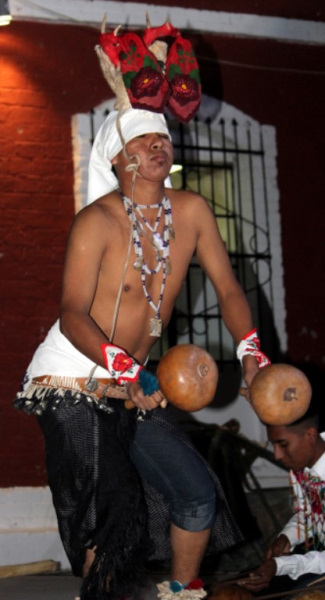
Performances of Danza del Venado (Deer Dance) can be seen in Sonora and Sinaloa. Usually, they are performed by indigenous dance troupes, like the Yaquis and Mayos.
As its name suggests, the dance’s spirit is attributed to the deer. In it, dancers pay tribute to the enduring spirit of the deer after it’s been hunted and felled by deer hunters.
The deeper meaning behind Danza del Venado is the celebration of the world’s renewal in springtime. As such, the dance is often performed during Lent or Easter.
Originally, Danza del Venado was performed by hunters the night before a hunt. It’s said to bring success to the hunting crew.
These days, it’s mostly done as either performance arts or a ceremony to communicate with the spiritual world.
In performance, dancers wear a belt made from deer hooves. He holds a gourd in each of his hands and has rattles tied to his ankles.
On his head, he wears a deer head (which can either be real or a replica) with red ribbons tied around the antlers, meant to symbolize flowers.
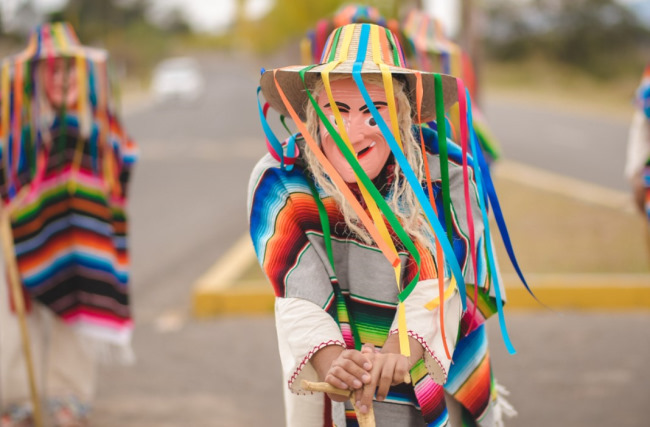
Danza de Los Viejitos (Dance of the Old Men) is a traditional dance style associated with the state of Michoacán in Mexico.
The core of the dance is quite spiritual. Danza de los Viejitos is said to have originated from the Purépecha area in the northwestern part of Michoacán. People in this area celebrate El Dios Viejo (the Old God).
They use this dance as a means to communicate with him to ask to talk to spirits, pray for good harvests, or learn about the past and predict the far future.
A performance is made up of four danzantes (dancers). There are four because each person represents the four elements: fire, earth, air, and water.
People believe four is the right number of dancers because four colors are making up a good corn stalk: red, yellow, white, and blue. Each corresponds to an element.
Like other traditional Mexican dances, the performers of Danza de Los Viejitos also wear costumes and masks.
A special part of their uniforms is the sandals with wooden soles, which make a distinct clicking sound when they hit the ground during the dance.

Danza de Los Voladores (Dance of the Flyers) is a staple of the Totonicapán area in the northern parts of Veracruz and Puebla states of Mexico.
The dance is said to have originated from the indigenous people of central Mexico. It eventually spread and grew in popularity throughout Mesoamerica.
Wonder why it’s called the Dance of the Flyers?
The centerpiece of a performance is a 30-foot-long pole. Four or five dancers dance around it, then proceed to climb it to the top.
From the top, four dancers would tie themselves to the pole with ropes, then launch themselves back to the ground. The fifth would remain at the top, playing the lute and drum combination.
When you watch it in person, the performance is nothing short of spectacular.
Danza de Los Voladores, according to one Totonac myth, was a ritual to ask the rain god Xipe Topec to end a devastating drought. After the ritual was performed, rains poured and the lands became fertile once more.
Other than Danza de los Voladores, this dance is also called Palo Volador (Flying Pole) and Los Voladores de Papantla (The Flyers of Papantla).
The former name is a homage to the Papantla area of Veracruz, where the Totonacs – the people most commonly associated with the dance – came from.
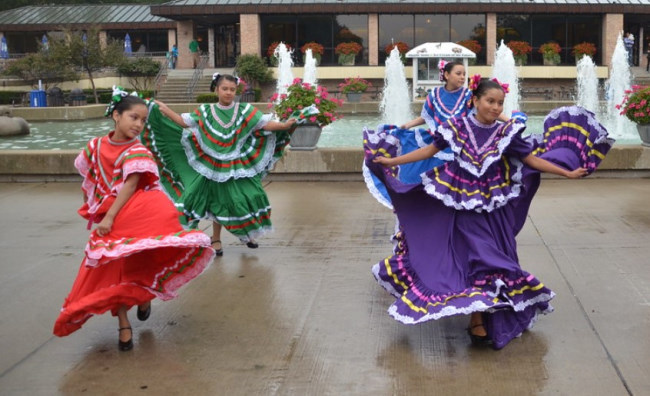
Among the different types of Mexican dance styles, Jarabe is probably the most well-known internationally. In English, Jarabe is often called the “Mexican Hat Dance”.
This is because, in the past, the dance was performed around a sombrero placed on the floor.
In the 1980s, Jarabe was incredibly popular in Mexican high society. The dance was about courtship, as such, it’s usually performed in a pair – one woman and one man.
At first, the man’s romantic advances were refused by the woman. But, by the end, he would be accepted and they would dance “happily ever after”.
Similar to other Mexican dances on this list, Jarabe performers are costumed. The man and his partners are dressed elegantly. He would be attired in the signature Mexican charro suit, while she would wear a China Poblana dress.
Jarabe Tapatío is mostly performed on Mariachi music. If you ever get the chance to visit Mexico, you will see performances on major holidays like Las Fiestas Patrias, Cinco de Mayo, and El Dieciséis de Septiembre.
Due to its popularity, Jarabe has been studied and adapted thoroughly. If you’re well-versed in the dance, you could see its influences in many modern Mexican dance styles.
To the north of Mexico, around the Zacatecas area, Matachines is king (it’s also known as Matlachines). The Danza de matachines is very old, being documented as far back as 1642.
People know of this dance through the colorful costumes worn by the performers, called Buffon. The headdress is made from chicken feathers dyed to have the same colors as the Mexican national flag.
They also wear dance shoes with wooden soles, like dancers who partake in Danza de Los Viejitos. The clacking sound emphasizes each move of the dancer as they flit across the stage.
Although these days, many tropes perform the Matachines for only entertainment purposes, many dancers still enter the dance for a higher purpose.
Particularly, they join in the dance as a veneration of either Mother Mary or Christ, God, and the Holy Trinity.
The origin of the Matachines is quite fussy. Some sources say that it came from Tlaxcala, but most experts seem to agree that it hailed from Aguascalientes.

Moros y Cristianos (Moors and Christians) isn’t an indigenous dance. It entered Mexico by way of monks in the 16th century. Nevertheless, it’s still widely performed in the country, especially in the Michoacán area.
Moros y Cristianos is often performed at big festivals, which include mock battles, negotiations, and dances.
The theme for Moros y Cristianos is the conquering campaign of the Moors against Spaniard towns with mostly Christian populations.
Performers are separated into two groups, corresponding to two religions. You can tell them apart from their masks.
- Performers who act as the Moors are going to wear masks and capes with a crescent insignia.
- Those who play the Christians are also similarly dressed, but marked with a cross.
Basically, it’s a historical reenactment in dance form!
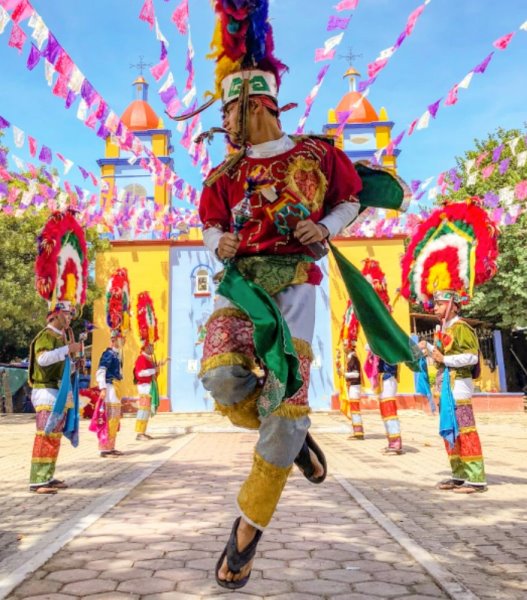
La Conquista (The Conquest) tells the story of the Spanish conquest of Mexico. Performance is more or less a play of Mexican history.
Performers enter the stage and perform as real historical figures, like the Aztec ruler Moctezuma, the conquistadors Hernán Cortés and La Malinche.
You’ll also see a female performer in the role of a Nahua woman who acts as the translator and adviser to the conquistadors.
It depicts the tragic death of Moctezuma at the hands of the conquistadors.
La Conquista is quite popular in the western parts of the country, in Michoacán and Jalisco. Though it is not an indigenous dance, La Conquista functions as a way to show people the history of Mexico.
It’s also a way to remember those who lived and prospered before the arrival of the Spaniards.
Despite much of Mexican culture and history being lost due to the Spanish Empire’s actions, the country, its people, and its culture endured.
Many excellent famous Mexican dance styles (or baile Folklorico) still exist in the 21st century.
Thanks to the Internet, you can see performances of every single one of these dances online. But, if you ever get the chance, you totally should see them live. The palpable magic in the air is well worth the journey.
Which one is your favorite? Have you ever seen a performance of any of these dances before? What was it like?
Tell us in the comment section!
Related posts:
- All Traditional Chinese Dance Names With History & Costumes
- 10 Traditional Vietnamese Dances With Rich Histories
- Ultimate List of Traditional French Dances
- 7 Popular Traditional Cuban Dances
Leave a Comment Cancel reply
Save my name, email, and website in this browser for the next time I comment.
- Share full article
For more audio journalism and storytelling, download New York Times Audio , a new iOS app available for news subscribers.
The Evolving Danger of the New Bird Flu
An unusual outbreak of the disease has spread to dairy herds in multiple u.s. states..
This transcript was created using speech recognition software. While it has been reviewed by human transcribers, it may contain errors. Please review the episode audio before quoting from this transcript and email [email protected] with any questions.
From “The New York Times,” I’m Sabrina Tavernise, and this is “The Daily.”
[MUSIC PLAYING]
The outbreak of bird flu that is tearing through the nation’s poultry farms is the worst in US history. But scientists say it’s now starting to spread into places and species it’s never been before.
Today, my colleague, Emily Anthes, explains.
It’s Monday, April 22.
Emily, welcome back to the show.
Thanks for having me. Happy to be here.
So, Emily, we’ve been talking here on “The Daily” about prices of things and how they’ve gotten so high, mostly in the context of inflation episodes. And one of the items that keeps coming up is eggs. Egg prices were through the roof last year, and we learned it was related to this. Avian flu has been surging in the United States. You’ve been covering this. Tell us what’s happening.
Yes, so I have been covering this virus for the last few years. And the bird flu is absolutely tearing through poultry flocks, and that is affecting egg prices. That’s a concern for everyone, for me and for my family. But when it comes to scientists, egg prices are pretty low on their list of concerns. Because they see this bird flu virus behaving differently than previous versions have. And they’re getting nervous, in particular, about the fact that this virus is reaching places and species where it’s never been before.
OK, so bird flu, though, isn’t new. I mean I remember hearing about cases in Asia in the ‘90s. Remind us how it began.
Bird flu refers to a bunch of different viruses that are adapted to spread best in birds. Wild water birds, in particular, are known for carrying these viruses. And flu viruses are famous for also being shapeshifters. So they’re constantly swapping genes around and evolving into new strains. And as you mentioned back in the ‘90s, a new version of bird flu, a virus known as H5N1, emerged in Asia. And it has been spreading on and off around the world since then, causing periodic outbreaks.
And how are these outbreaks caused?
So wild birds are the reservoir for the virus, which means they carry it in their bodies with them around the world as they fly and travel and migrate. And most of the time, these wild birds, like ducks and geese, don’t even get very sick from this virus. But they shed it. So as they’re traveling over a poultry farm maybe, if they happen to go to the bathroom in a pond that the chickens on the farm are using or eat some of the feed that chickens on the farm are eating, they can leave the virus behind.
And the virus can get into chickens. In some cases, it causes mild illness. It’s what’s known as low pathogenic avian influenza. But sometimes the virus mutates and evolves, and it can become extremely contagious and extremely fatal in poultry.
OK, so the virus comes through wild birds, but gets into farms like this, as you’re describing. How have farms traditionally handled outbreaks, when they do happen?
Well, because this threat isn’t new, there is a pretty well-established playbook for containing outbreaks. It’s sometimes known as stamping out. And brutally, what it means is killing the birds. So the virus is so deadly in this highly pathogenic form that it’s sort of destined to kill all the birds on a farm anyway once it gets in. So the response has traditionally been to proactively depopulate or cull all the birds, so it doesn’t have a chance to spread.
So that’s pretty costly for farmers.
It is. Although the US has a program where it will reimburse farmers for their losses. And the way these reimbursements work is they will reimburse farmers only for the birds that are proactively culled, and not for those who die naturally from the virus. And the thinking behind that is it’s a way to incentivize farmers to report outbreaks early.
So, OK, lots of chickens are killed in a way to manage these outbreaks. So we know how to deal with them. But what about now? Tell me about this new strain.
So this new version of the virus, it emerged in 2020.
After the deadly outbreak of the novel coronavirus, authorities have now confirmed an outbreak of the H5N1 strain of influenza, a kind of bird flu.
And pretty quickly it became clear that a couple things set it apart.
A bald eagle found dead at Carvins Cove has tested positive for the highly contagious bird flu.
This virus, for whatever reason, seemed very good at infecting all sorts of wild birds that we don’t normally associate with bird flu.
[BIRD CRYING]
He was kind of stepping, and then falling over, and using its wing to right itself.
Things like eagles and condors and pelicans.
We just lost a parliament of owls in Minneapolis.
Yeah, a couple of high profile nests.
And also in the past, wild birds have not traditionally gotten very sick from this virus. And this version of the virus not only spread widely through the wild bird population, but it proved to be devastating.
The washing up along the East Coast of the country from Scotland down to Suffolk.
We were hearing about mass die-offs of seabirds in Europe by the hundreds and the thousands.
And the bodies of the dead dot the island wherever you look.
Wow. OK. So then as we know, this strain, like previous ones, makes its way from wild animals to farmed animals, namely to chickens. But it’s even more deadly.
Absolutely. And in fact, it has already caused the worst bird flu outbreak in US history. So more than 90 million birds in the US have died as a result of this virus.
90 million birds.
Yes, and I should be clear that represents two things. So some of those birds are birds who naturally got infected and died from the virus. But the vast majority of them are birds that were proactively culled. What it adds up to is, is 90 million farmed birds in the US have died since this virus emerged. And it’s not just a chicken problem. Another thing that has been weird about this virus is it has jumped into other kinds of farms. It is the first time we’ve seen a bird flu virus jump into US livestock.
And it’s now been reported on a number of dairy farms across eight US states. And that’s just something that’s totally unprecedented.
So it’s showing up at Dairy farms now. You’re saying that bird flu has now spread to cows. How did that happen?
So we don’t know exactly how cows were first infected, but most scientists’ best guess is that maybe an infected wild bird that was migrating shed the virus into some cattle feed or a pasture or a pond, and cattle picked it up. The good news is they don’t seem to get nearly as sick as chickens do. They are generally making full recoveries on their own in a couple of weeks.
OK, so no mass culling of cows?
No, that doesn’t seem to be necessary at this point. But the bad news is that it’s starting to look like we’re seeing this virus spread from cow to cow. We don’t know exactly how that’s happening yet. But anytime you see cow-to-cow or mammal-to-mammal transmission, that’s a big concern.
And why is that exactly?
Well, there are a bunch of reasons. First, it could allow the outbreak to get much bigger, much faster, which might increase the risk to the food supply. And we might also expect it to increase the risk to farm workers, people who might be in contact with these sick cows.
Right now, the likelihood that a farmer who gets this virus passes it on is pretty low. But any time you see mammal-to-mammal transmission, it increases the chance that the virus will adapt and possibly, maybe one day get good at spreading between humans. To be clear, that’s not something that there’s any evidence happening in cows right now. But the fact that there’s any cow-to-cow transmission happening at all is enough to have scientists a bit concerned.
And then if we think more expansively beyond what’s happening on farms, there’s another big danger lurking out there. And that’s what happens when this virus gets into wild animals, vast populations that we can’t control.
We’ll be right back.
So, Emily, you said that another threat was the threat of flu in wild animal populations. Clearly, of course, it’s already in wild birds. Where else has it gone?
Well, the reason it’s become such a threat is because of how widespread it’s become in wild birds. So they keep reintroducing it to wild animal populations pretty much anywhere they go. So we’ve seen the virus repeatedly pop up in all sorts of animals that you might figure would eat a wild bird, so foxes, bobcats, bears. We actually saw it in a polar bear, raccoons. So a lot of carnivores and scavengers.
The thinking is that these animals might stumble across a sick or dead bird, eat it, and contract the virus that way. But we’re also seeing it show up in some more surprising places, too. We’ve seen the virus in a bottle-nosed dolphin, of all places.
And most devastatingly, we’ve seen enormous outbreaks in other sorts of marine mammals, especially sea lions and seals.
So elephant seals, in particular in South America, were just devastated by this virus last fall. My colleague Apoorva Mandavilli and I were talking to some scientists in South America who described to us what they called a scene from hell, of walking out onto a beach in Argentina that is normally crowded with chaotic, living, breathing, breeding, elephant seals — and the beach just being covered by carcass, after carcass, after carcass.
Mostly carcasses of young newborn pups. The virus seemed to have a mortality rate of 95 percent in these elephant seal pups, and they estimated that it might have killed more than 17,000 of the pups that were born last year. So almost the entire new generation of this colony. These are scientists that have studied these seals for decades. And they said they’ve never seen anything like it before.
And why is it so far reaching, Emily? I mean, what explains these mass die-offs?
There are probably a few explanations. One is just how much virus is out there in the environment being shed by wild birds into water and onto beaches. These are also places that viruses like this haven’t been before. So it’s reaching elephant seals and sea lions in South America that have no prior immunity.
There’s also the fact that these particular species, these sea lions and seals, tend to breed in these huge colonies all crowded together on beaches. And so what that means is if a virus makes its way into the colony, it’s very conducive conditions for it to spread. And scientists think that that’s actually what’s happening now. That it’s not just that all these seals are picking up the virus from individual birds, but that they’re actually passing it to each other.
So basically, this virus is spreading to places it’s never been before, kind of virgin snow territory, where animals just don’t have the immunity against it. And once it gets into a population packed on a beach, say, of elephant seals, it’s just like a knife through butter.
Absolutely. And an even more extreme example of that is what we’re starting to see happen in Antarctica, where there’s never been a bird flu outbreak before until last fall, for the first time, this virus reached the Antarctic mainland. And we are now seeing the virus move through colonies of not only seabirds and seals, but penguin colonies, which have not been exposed to these viruses before.
And it’s too soon to say what the toll will be. But penguins also, of course, are known for breeding in these large colonies.
Probably. don’t have many immune defenses against this virus, and of course, are facing all these other environmental threats. And so there’s a lot of fear that you add on the stress of a bird flu virus, and it could just be a tipping point for penguins.
Emily, at this point, I’m kind of wondering why more people aren’t talking about this. I mean, I didn’t know any of this before having this conversation with you, and it feels pretty worrying.
Well, a lot of experts and scientists are talking about this with rising alarm and in terms that are quite stark. They’re talking about the virus spreading through wild animal populations so quickly and so ferociously that they’re calling it an ecological disaster.
But that’s a disaster that sometimes seems distant from us, both geographically, we’re talking about things that are happening maybe at the tip of Argentina or in Antarctica. And also from our concerns of our everyday lives, what’s happening in Penguins might not seem like it has a lot to do with the price of a carton of eggs at the grocery store. But I think that we should be paying a lot of attention to how this virus is moving through animal populations, how quickly it’s moving through animal populations, and the opportunities that it is giving the virus to evolve into something that poses a much bigger threat to human health.
So the way it’s spreading in wild animals, even in remote places like Antarctica, that’s important to watch, at least in part because there’s a real danger to people here.
So we know that the virus can infect humans, and that generally it’s not very good at spreading between humans. But the concern all along has been that if this virus has more opportunities to spread between mammals, it will get better at spreading between them. And that seems to be what is happening in seals and sea lions. Scientists are already seeing evidence that the virus is adapting as it passes from marine mammal to marine mammal. And that could turn it into a virus that’s also better at spreading between people.
And if somebody walks out onto a beach and touches a dead sea lion, if their dog starts playing with a sea lion carcass, you could imagine that this virus could make its way out of marine mammals and into the human population. And if it’s this mammalian adapted version of the virus that makes its way out, that could be a bigger threat to human health.
So the sheer number of hosts that this disease has, the more opportunity it has to mutate, and the more chance it has to mutate in a way that would actually be dangerous for people.
Yes, and in particular, the more mammalian hosts. So that gives the virus many more opportunities to become a specialist in mammals instead of a specialist in birds, which is what it is right now.
Right. I like that, a specialist in mammals. So what can we do to contain this virus?
Well, scientists are exploring new options. There’s been a lot of discussion about whether we should start vaccinating chickens in the US. The government, USDA labs, have been testing some poultry vaccines. It’s probably scientifically feasible. There are challenges there, both in terms of logistics — just how would you go about vaccinating billions of chickens every year. There are also trade questions. Traditionally, a lot of countries have not been willing to accept poultry products from countries that vaccinate their poultry.
And there’s concern about whether the virus might spread undetected in flocks that are vaccinated. So as we saw with COVID, the vaccine can sometimes stop you from getting sick, but it doesn’t necessarily stop infection. And so countries are worried they might unknowingly import products that are harboring the virus.
And what about among wild animals? I mean, how do you even begin to get your head around that?
Yeah, I mean, thinking about vaccinating wild animals maybe makes vaccinating all the chickens in the US look easy. There has been some discussion of limited vaccination campaigns, but that’s not feasible on a global scale. So unfortunately, the bottom line is there isn’t a good way to stop spread in wild animals. We can try to protect some vulnerable populations, but we’re not going to stop the circulation of this virus.
So, Emily, we started this conversation with a kind of curiosity that “The Daily” had about the price of eggs. And then you explained the bird flu to us. And then somehow we ended up learning about an ecological disaster that’s unfolding all around us, and potentially the source of the next human pandemic. That is pretty scary.
It is scary, and it’s easy to get overwhelmed by it. And I feel like I should take a step back and say none of this is inevitable. None of this is necessarily happening tomorrow. But this is why scientists are concerned and why they think it’s really important to keep a very close eye on what’s happening both on farms and off farms, as this virus spreads through all sorts of animal populations.
One thing that comes up again and again and again in my interviews with people who have been studying bird flu for decades, is how this virus never stops surprising them. And sometimes those are bad surprises, like these elephant seal die-offs, the incursions into dairy cattle. But there are some encouraging signs that have emerged recently. We’re starting to see some early evidence that some of the bird populations that survived early brushes with this virus might be developing some immunity. So that’s something that maybe could help slow the spread of this virus in animal populations.
We just don’t entirely know how this is going to play out. Flu is a very difficult, wily foe. And so that’s one reason scientists are trying to keep such a close, attentive eye on what’s happening.
Emily, thank you.
Thanks for having me.
Here’s what else you should know today.
On this vote, the yeas are 366 and the nays are 58. The bill is passed.
On Saturday, in four back-to-back votes, the House voted resoundingly to approve a long-stalled package of aid to Ukraine, Israel and other American allies, delivering a major victory to President Biden, who made aid to Ukraine one of his top priorities.
On this vote, the yeas are 385, and the no’s are 34 with one answering present. The bill is passed without objection.
The House passed the component parts of the $95 billion package, which included a bill that could result in a nationwide ban of TikTok.
On this vote, the yeas are 311 and the nays are 112. The bill is passed.
Oh, one voting present. I missed it, but thank you.
In a remarkable breach of custom, Democrats stepped in to supply the crucial votes to push the legislation past hard-line Republican opposition and bring it to the floor.
The House will be in order.
The Senate is expected to pass the legislation as early as Tuesday.
Today’s episode was produced by Rikki Novetsky, Nina Feldman, Eric Krupke, and Alex Stern. It was edited by Lisa Chow and Patricia Willens; contains original music by Marion Lozano, Dan Powell, Rowan Niemisto, and Sophia Lanman; and was engineered by Chris Wood. Our theme music is by Jim Brunberg and Ben Landsverk of Wonderly. Special thanks to Andrew Jacobs.
That’s it for “The Daily.” I’m Sabrina Tavernise. See you tomorrow.

- April 24, 2024 • 32:18 Is $60 Billion Enough to Save Ukraine?
- April 23, 2024 • 30:30 A Salacious Conspiracy or Just 34 Pieces of Paper?
- April 22, 2024 • 24:30 The Evolving Danger of the New Bird Flu
- April 19, 2024 • 30:42 The Supreme Court Takes Up Homelessness
- April 18, 2024 • 30:07 The Opening Days of Trump’s First Criminal Trial
- April 17, 2024 • 24:52 Are ‘Forever Chemicals’ a Forever Problem?
- April 16, 2024 • 29:29 A.I.’s Original Sin
- April 15, 2024 • 24:07 Iran’s Unprecedented Attack on Israel
- April 14, 2024 • 46:17 The Sunday Read: ‘What I Saw Working at The National Enquirer During Donald Trump’s Rise’
- April 12, 2024 • 34:23 How One Family Lost $900,000 in a Timeshare Scam
- April 11, 2024 • 28:39 The Staggering Success of Trump’s Trial Delay Tactics
- April 10, 2024 • 22:49 Trump’s Abortion Dilemma
Hosted by Sabrina Tavernise
Produced by Rikki Novetsky , Nina Feldman , Eric Krupke and Alex Stern
Edited by Lisa Chow and Patricia Willens
Original music by Marion Lozano , Dan Powell , Rowan Niemisto and Sophia Lanman
Engineered by Chris Wood
Listen and follow The Daily Apple Podcasts | Spotify | Amazon Music
The outbreak of bird flu currently tearing through the nation’s poultry is the worst in U.S. history. Scientists say it is now spreading beyond farms into places and species it has never been before.
Emily Anthes, a science reporter for The Times, explains.
On today’s episode

Emily Anthes , a science reporter for The New York Times.

Background reading
Scientists have faulted the federal response to bird flu outbreaks on dairy farms .
Here’s what to know about the outbreak.
There are a lot of ways to listen to The Daily. Here’s how.
We aim to make transcripts available the next workday after an episode’s publication. You can find them at the top of the page.
Special thanks to Andrew Jacobs .
The Daily is made by Rachel Quester, Lynsea Garrison, Clare Toeniskoetter, Paige Cowett, Michael Simon Johnson, Brad Fisher, Chris Wood, Jessica Cheung, Stella Tan, Alexandra Leigh Young, Lisa Chow, Eric Krupke, Marc Georges, Luke Vander Ploeg, M.J. Davis Lin, Dan Powell, Sydney Harper, Mike Benoist, Liz O. Baylen, Asthaa Chaturvedi, Rachelle Bonja, Diana Nguyen, Marion Lozano, Corey Schreppel, Rob Szypko, Elisheba Ittoop, Mooj Zadie, Patricia Willens, Rowan Niemisto, Jody Becker, Rikki Novetsky, John Ketchum, Nina Feldman, Will Reid, Carlos Prieto, Ben Calhoun, Susan Lee, Lexie Diao, Mary Wilson, Alex Stern, Dan Farrell, Sophia Lanman, Shannon Lin, Diane Wong, Devon Taylor, Alyssa Moxley, Summer Thomad, Olivia Natt, Daniel Ramirez and Brendan Klinkenberg.
Our theme music is by Jim Brunberg and Ben Landsverk of Wonderly. Special thanks to Sam Dolnick, Paula Szuchman, Lisa Tobin, Larissa Anderson, Julia Simon, Sofia Milan, Mahima Chablani, Elizabeth Davis-Moorer, Jeffrey Miranda, Renan Borelli, Maddy Masiello, Isabella Anderson and Nina Lassam.
Advertisement
CopperKnob Stepsheets

Mail Myself To Mexico

Line Dances To This Music
32 Count 4 Wall Improver Music: Drinkin' My Baby Off My Mind - Eddie Rabbitt
32 Count 2 Wall Easy Intermediate Music: Mail Myself To Mexico - Buddy Jewell : (Album: One in a Row - Jan 2002)
64 Count 2 Wall Improver Music: Mail Myself To Mexico - Buddy Jewell
64 Count 2 Wall Intermediate Music: Mail Myself To Mexico - Buddy Jewell
32 Count 4 Wall Beginner Music: Mail Myself To Mexico - Buddy Jewell
Spice Girls Have a Full Reunion at Victoria Beckham's 50th Birthday Party
Stop right now and check out a long-awaited reunion of all five spice girls at victoria beckham's 50th birthday bash, as seen in videos shared by her husband david beckham..
The Spice Girls knew what we want, what we really, really want. And they delivered.
A reunion of all five members of the '90s pop group took place April 20, marking the first time in more than a decade that the singers were seen on camera together in more than a decade. Mel B , 48, Geri Halliwell Horner , 51, Emma Bunton , 48, and Mel C , 50, attended Victoria Beckham 's 50th birthday party at a club in London and recreated an iconic moment in their band's history—and Posh Spice's husband was there to provide the receipts.
In a video recorded and shared by David Beckham , the Spice Girls are seen singing along and performing the dance choreography to their hit 1997 song "Stop."
"Best night ever!" Victoria captioned the video . "Happy Birthday to me! I love you all so much! #SpiceUpYourLife."
David, who could not look more excited about the performance, wrote alongside his own Instagram post , "I mean come on x @victoriabeckham @melaniecmusic @officialmelb @emmaleebunton @gerihalliwellhorner."
Mel B shared Victoria's post on her Instagram Stories, writing, "About last night #tourdatescommingsoon."
Scary Spice had hinted that a Spice Girls reunion was in the works back in January.
Trending Stories
Christina applegate suffering from "gross" sapovirus after eating poop, kristi yamaguchi reveals what really goes down in the olympic village, kim kardashian posts pic with karlie kloss after new taylor swift song.
"I get told off all the time for announcing stuff I'm not meant to announce," she said on the Jennifer Hudson Show at the time. "But what I can say is we're definitely working on something together—all five of us. And by me just saying that, I'm probably going to get into trouble again."
The America's Got Talent: Fantasy League judge continued, "It's amazing that we've managed to kind of still stay friends, it's been 30 years," adding, "As a group you're just welded together for life because you've been through such a crazy experience."
View this post on Instagram A post shared by Victoria Beckham (@victoriabeckham)
After the Spice Girls split in 2000, all five members reunited formally to tour together in late 2007 and early 2008. In 2012, they performed at the Olympics closing ceremony in London.
The Spice Girls singers also toured as a quartet — without Victoria —in 2019 and have also had many informal mini-reunions over the years. In 2022, Victoria, Mel C and Emma attended Geri's 50th birthday party, where they danced, sang along and recreated their dance choreography to the band's 1996 hit "Say You'll Be There." At the time, David also shared video of the reunion, writing, "@officialmelb you were missed."
Look back at the Spice Girls over the years...
The Spice Girls became a global success upon the release of "Wannabe" in 1996. Considered the best-selling female group of all time, the British songstresses have sold over 85 million records worldwide.
The girl group rocked the stage at the 1997 MTV Video Music Awards in New York City with a performance of "Say You'll Be There." They took home Best Dance Video for "Wannabe" that year.
Lucky, Prince Harry ! The young royal is pictured with his father, Prince Charles , during a 1997 meet and greet with the Spice Girls.
Legends Only
Ginger Spice's Union Jack mini-dress became synonymous with the Spice Girls after their performance at the 1997 Brit Awards. Initial controversy aside, the iconic ensemble sold for more than $58,000 at a a charity auction.
Spice World
Released in December 1997, Spice World: The Movie became an instant blockbuster hit. Two decades later, it remains a cult phenomenon and recently even returned to theaters in the U.K. to celebrate the milestone anniversary!
'90s Nights
Posh, Scary, Sporty, Baby and Ginger Spice come together for a 1998 photo opp. Two years later, they'd announce their decision to put Spice Girls on the back burner for a renewed focus on their respective solo careers.
The Spice Girls made a comeback in 2007 with a global tour that sold out in a whopping 38 seconds. That same year, the ladies hit the stage at the Victoria's Secret Fashion Show in Hollywood.
After four years apart, the girl group reunited once again to celebrate the premiere of Viva Forever! , a musical inspired by their time in the spotlight.
At the closing ceremony for the 2012 London Olympics, the fivesome performed a medley of greatest hits like "Wannabe" and "Spice Up Your Life."
In 2016, Melanie Brown, Geri Halliwell and Emma Bunton announced a spinoff trio called GEM. A single titled "Song for Her" leaked online, but the project was evidently put on hold around the time Halliwell announced her pregnancy with baby No. 2.
Cue the pandemonium! All five Spice Girls sent social media into a frenzy with this photo posted in February 2018.
They responded to the excitement in a joint statement, saying, "We have enjoyed a wonderful afternoon catching-up and reminiscing about the amazing times we have spent together. We are always overwhelmed at how much interest there is across the whole world for The Spice Girls. The time now feels right to explore some incredible new opportunities together. We all agree that there are many exciting possibilities that will once again embrace the original essence of The Spice Girls, while reinforcing our message of female empowerment for future generations."
After announcing in late 2018 that four of the five Spice Girls would be reuniting once more for a tour—Victoria sat this one out to focus on the commitment to her fashion empire—Geri, Emma and the Mels began a 13-date European tour at Croake Park in Dublin, Ireland on May 24, 2019. Concluding with three nights at London's Wembley Stadium, the tour earned over $78 million, proving that Girl Power never goes out of style.
Taylor Swift Reveals the Real Meaning Behind TTPD Songs
Rapper chris king dead at 32: justin bieber & more pay tribute.

IMAGES
VIDEO
COMMENTS
Tour In Mexico Coreografía: Adriano Castagnoli Profesores: Carlos Rivero y Francisco Javier Torre Parte A: 32 Tiempos, Parte B: 20 Tiempos, 2 Paredes "Go To ...
Description des pas pour les cours de l'association Boots RiderDanse : Tour in MexicoNiveau : Débutant (niveau 1 sur 4)Comptes : A 32 temps + B 20 tempsMur(s...
Line Dance Tour in MexicoChoreographie: Adriano Castagnoliphrased, 2 wall, beginner/intermediateMusik: : "Go To Mexico" by Coffey AndersonWorkshop in Lloret ...
Phrased Improver. Choreographer: Adriano Castagnoli (IT) - July 2016. Music: Go to Mexico - Coffey Anderson. Sequence: AA B AAAA B AAA B AAA. PART A: 32 counts. A1: KICK BALL CHANGE RIGHT, KICK RIGHT (TWICE), ROCK BACK, PIVOT 1/2 LEFT. 1&2 Kick Right Forward, Step Right Beside Left, Step Onto Left In Place.
Cette chorégraphie a été traduite pour Amlos country dance — Elle peut comporter des erreurs ou des variantes — Se référer à la fiche de danse originale qui seule fait foi. TOUR IN MEXICO (Balade au Mexique) Chorégraphe : Adriano Castagnoli Niveau : Intermédiaire Danse : En ligne 54 temps 4 murs Phrasé
Tour in Mexico es fruto del trabajo del reconocido coreógrafo italiano Adriano Castagnoli. La hizo para la canción Go To Mexico de Coffey Anderson. A pesar de tener estrofas, es muy sencilla de aprender y la canción muy agradable de bailar. Por ello, aunque te consideres principiante, deberías atreverte con ella. Instrucciones:
Tour in Mexico Level: 32 / 20 Count, 2 Wall, Intermediate Line Dance Choreograph: Adriano Castagnoli Musik: Go to Mexico / Coffey Anderson Abfolge: A A B A A A A B A A A B A A A Teil A Kick-Ball-Change, Kick 2x, Back Rock, Step Pivot ½ Turn L 1 + 2 RF nach vorn kicken, RF neben LF stellen, LF nach vorn stellen 3 - 4 RF 2x nach vorn kicken
TOUR IN MEXICO Nivel: Intermedio Coreografía: Adriano Castagnoli Canción: "Go To Mexico" por Coffey Anderson Hoja de pasos por: Xavi Barrera Paredes: 2 Tiempos: 52 Tiene una estrofa de 32 tiempos (A) y otra de 20 tiempos (B) Secuencia: AA B AAAA B AAA B AAA PARTE A, 32 tiempos KICK BALL CHANGE, KICK x 2, ROCK STEP, ½ TURN PIVOT
Tour in Mexico. LineDance-Tanzbeschreibung Level. 32 / 20 Count, 2 Wall, Intermediate Line Dance. Choreograph. Adriano Castagnoli. Musik. Go to Mexico / Coffey Anderson. LineDance-Choreographie. Abfolge: A A B A A A A B A A A B A A A . Teil A. Section 1. Kick-Ball-Change, Kick 2x, Back Rock, Step Pivot ½ Turn L.
32 Count 4 Wall Easy Beginner Line Dance - Ira Weisburd (USA) - April 2020. Login; Register; CopperKnob Stepsheets 145033. Stepsheets; Gallery; Whats On; Articles; Links; ... In Mexico - Moe Bandy . Genre: Country Line Dance Introduction: 8 count instr., start on vocal @ 10 sec. *NO TAGS !! NO RESTARTS !!
Choreographer: Randy Pelletier (USA) - January 2020. Music: Ridin' My Thumb to Mexico - Ronnie Dunn : (Album: Re-Dunn) Intro: 32 Counts after drum beat kicks in. [1-8] STEP, LOCKSTEP, SCUFF, STEP, LOCKSTEP, SCUFF. 1 - 4 Step right forward, lock left behind right, step right forward, scuff left. 5 - 8 Step left forward, lock right behind left ...
Choreographed by Adriano CastagnoliDescription: part A 32 count + part B 20 count, 2 wall, level beginner - intermed., phrasedMusic: "Coffey Anderson" - Go T...
We have all been there. We are on vacation in Mexico and we are off to have a fun night out with our friends. Have a couple of drinks, listen to some music, but then, when it comes to dancing, it just gets a little complicated. And here in Mexico, we have a lot of dance moves since we have many different music genres, from norteño to mariachi.
Tutorial, walk through and dance to an absolute beginner level line dance - The Mexican Way. The Mexican Way: choreographed by Yvonne Anderson; music:...
Instructors WorkshopAugust 10, 2024. Line Dance NM is the official communications platform for the New Mexico Line Dance Jamboree. Information about Jam dances, Split-floor dances, and nominated dances are provided. Information for upcoming Jamborees, workshops, and other events is also found here.
Tour in Mexico lie danceTOUR IN MEXICOPHRASED (A=32 counts, B=20 counts), 2 wall. Beginner/Intermediate Line Dance. MUSIC: Coffey Anderson - Go To MexicoChor...
Down In Mexico Choreographed by Peter Metelnick & Alison Biggs Description: 32 count, 4 wall, beginner/intermediate line dance Music: Down In Mexico by Jerrod Niemann [CD: Judge Jerrod & The Hung Jury] Start on verse vocals, 16 counts after 1st heavy drum beat RIGHT SIDE, LEFT TOGETHER, ¼ RIGHT SHUFFLE, LEFT FORWARD, ½ RIGHT TURN, ¼ RIGHT &
Kenny Chesney launched his massive 2024 Sun Goes Down Tour with a bang on Saturday (April 20), bringing along Zac Brown Band, Megan Moroney, and Uncle Kracker.. The setlist is packed with Chesney's hits like "Beer in Mexico" and "American Kids," plus covers of "Drift Away" and a heartfelt rendition of "Come Monday" as a tribute to the legendary Jimmy Buffett.
Choreographer: Gordon Elliott (AUS) - October 2023. Music: Down In Mexico - Jerrod Niemann. Introduction : 16 Beats. HIP, HIP, TRIPLE STEP, HIP, HIP, TRIPLE STEP. 1, 2 Step R To The Side Push Hips To The Right, Push Hips To The Left, 3 & 4 Triple Step On The Spot Step : R-L-R,
7. Jarabe Tapatío - The most well-known Mexican dance. Among the different types of Mexican dance styles, Jarabe is probably the most well-known internationally. In English, Jarabe is often called the "Mexican Hat Dance". This is because, in the past, the dance was performed around a sombrero placed on the floor.
Tour In MexicoChoreographie: Adriano CastagnoliBeschreibung: Phrased, 2 wall, beginner/intermediate line danceMusik: Go To Mexico von Coffey AndersonHinweis:...
The Evolving Danger of the New Bird Flu. An unusual outbreak of the disease has spread to dairy herds in multiple U.S. states. April 22, 2024, 6:00 a.m. ET. Share full article. Hosted by Sabrina ...
32 Count 4 Wall Improver Music: Drinkin' My Baby Off My Mind - Eddie Rabbitt. Margaritas In Mexico Rob Pointer (AUS) - March 2015. 32 Count 2 Wall Easy Intermediate Music: Mail Myself To Mexico - Buddy Jewell : (Album: One in a Row - Jan 2002) Mexican E Mail Jan Wyllie (AUS) 64 Count 2 Wall Improver Music: Mail Myself To Mexico - Buddy Jewell.
Mel B, 48, Geri Halliwell Horner, 51, Emma Bunton, 48, and Mel C, 50, attended Victoria Beckham 's 50th birthday party at a club in London and recreated an iconic moment in their band's history ...
Choreographer: Ira Weisburd (USA) April 2020Music: In Mexico by Moe Bandy https://www.copperknob.co.uk/stepsheets/in-mexico-ID141847.aspx**Please watch Ira's...